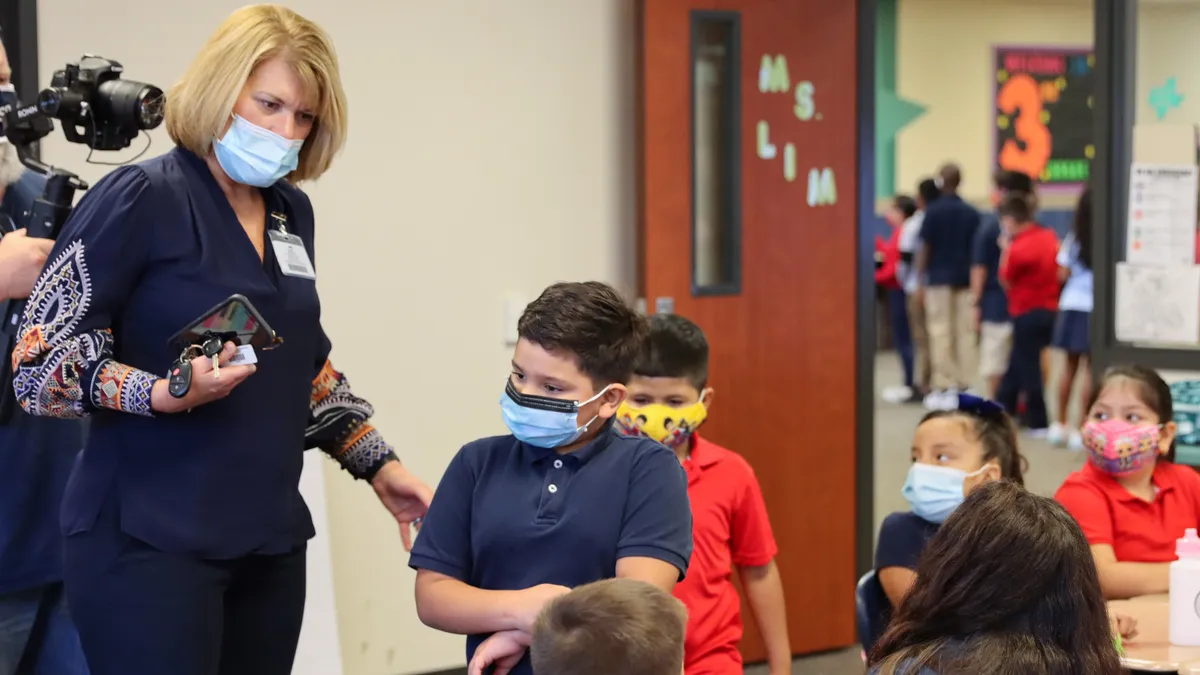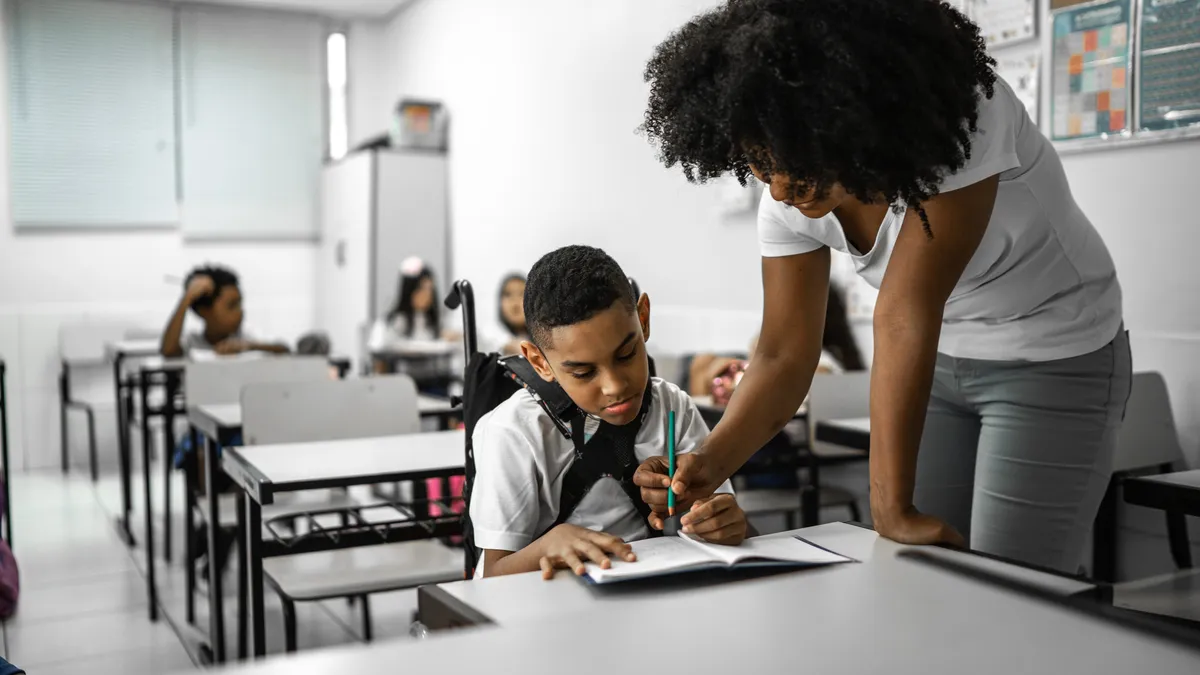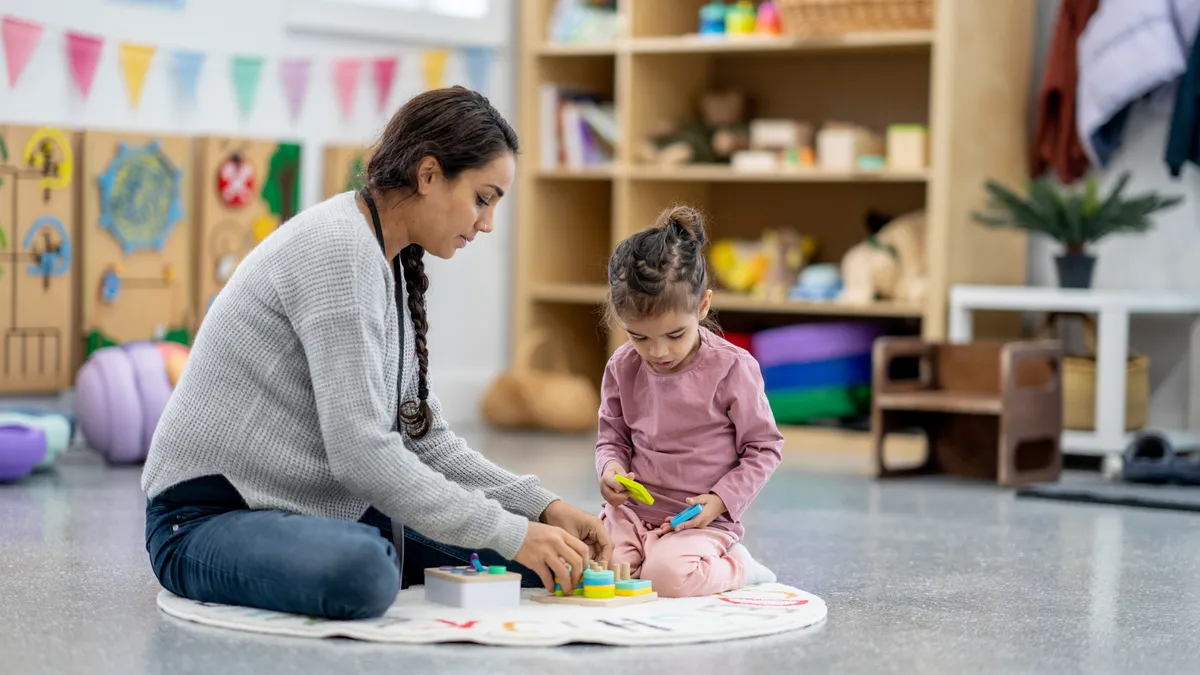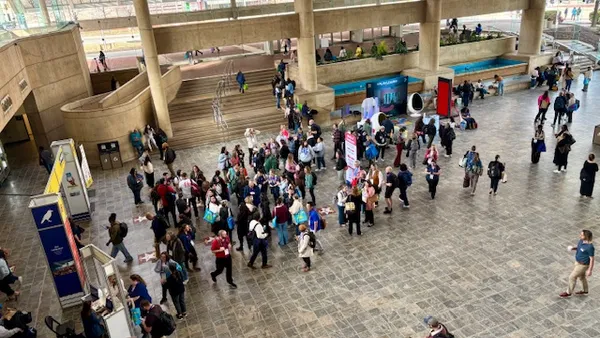Burnout isn’t a new concept for school leaders and staff, but prolonged uncertainty and intensity of the pandemic is pushing educators in all roles to reconsider their careers.
Results of a national survey of teachers released in April by Christopher Newport University found high levels of stress and varying degrees of anxiety. And an increasing rate of superintendent resignations and early retirements is a reminder of the toll of COVID-19.
“Superintendent positions have always been stressful, but it has been unrelenting for a year-and-a-half,” said Superintendent Ken Wallace from Maine Township High School District 207 in Illinois. The district is about 30 minutes from Chicago and serves nine communities through three high schools.
“It doesn’t give you time to breathe. There is only so much any one human can stand of unrelenting pressure before reaching a breaking point,” said Wallace.
Gwendolyn Taylor, principal of Huntington Middle School in Perry, Georgia, adds that the constant presence of technology has compounded the stress that leads to feelings of burnout. Devices created 24/7 access to the school and principals where families can call anytime.
“No principal ever wants to turn a student or family away in need, and so most principals struggle not answering the phone call or email immediately to support our communities,” she said.
The effects of overwhelming stress that lead to burnout pose health risks for the individual. This also has larger implications for schools as it relates to staffing.
“In November, and in the spring, we had multiple days in which our building of 800 students nearly shut down due to substitute shortages,” said Brian E. Cox, principal of Johnson Junior High School in Cheyenne, Wyoming.
With the delta variant and the dramatic rise in cases across the country, the coming school year will likely be challenging. While many things remain out of school leaders’ control, these strategies can help battle burnout.
Distributive leadership
Administrators often feel like they are carrying the “weight” of the school (and community) on their shoulders. But they are surrounded by a team of fellow leaders who bring specific skill sets and lessen the burden. Cox tapped into insights from staff and students to discover the most significant pain points. Out of that collaboration the school began offering mental health services after hours.
“As a principal, you do not have to have all of the answers. You need to be able to ask the right question, which guides the thinking of your staff,” said Cox. “Utilizing teachers with very specific skill sets, we were able to address key topics of concern that arose. Combined, they become an unstoppable force that even COVID was unable to best for our families.”
Cox also worked with counselor Kristen Burnett to create short mindfulness newsletters for staff. The goal was to help reduce call-ins. When many people become stressed, they say they are in need of a mental health day. This can quickly result in a sick day, which can lead to staffing shortages.
“Self-care is not skipping out on work to heal mentally,” Cox said. “Self-care is the incorporation of healthier practices into your life that reduce stress. Working with our staff to be mindful of how they are doing and ways to create true self-care instead of procrastination was critical.”
Stay connected
Burnout is isolating. The natural tendency with burnout is to isolate and withdraw. The superintendent position can be difficult and lonely in the best of times, according to Wallace, and he adds that COVID intensified those feelings tenfold.
His solution: to actively engage and connect.
On Twitter, he launched Project 3x3. Through this initiative, he checked in with three connections via tweets and encouraged others to do the same to amplify the benefits.
“It was a necessary and cool thing to witness with people checking in and supporting one another,” he said. “Our state superintendent association has also been really good with weekly check-ins.”
Do not disturb
Administrators like to stay ahead of the game, but the pandemic pushed work-home boundaries to unprecedented levels. Sabreen Mutawally, assistant principal at Page High School in Greensboro, North Carolina, said she often found herself checking and responding to emails first thing in the morning or as she laid in bed at night, which ultimately led to a lack of sleep and feelings of anxiety and frustration.
“Setting your email accounts, including work and personal, on ‘do not disturb’ outside of work hours was huge. You can also use this setting or the ‘bedtime mode’ feature on your phone to silence all notifications before bed,” said Mutawally. “We must honor ourselves, peace of mind and safe space by separating work from home.”
Pace yourself
As an “ultramarathoner,” Cox uses the sport to draw analogies to his role as a principal. Runners do not start a 100-mile race thinking about the last 10 miles. The thought of it will cripple even the strongest mind.
Instead, athletes think of the next mile, and then the next, and then the next aid station — and before they know it, they are nearing the completion of a race that seemed too much to comprehend. Pacing is a critical strategy for managing burnout.
“This past year was the educational equivalent of a 100-mile race. You needed to know that you had a crew supporting you,” Cox said. “You needed to know that there would be aid stations along the way to refuel and rehydrate. You needed to know that you had a pacer in your administration that would help guide you, speeding you up or slowing you down at times to keep you as constant as possible for your benefit.”
One way he paced himself was through using feedback from climate surveys and informal communications to gauge student, staff and parent pressures. That feedback has allowed for changes to temper or deflect other stressors from reaching them efficiently.
Put yourself first
School leaders are servant leaders who are hyper-attentive to watching over the people in their charge. But it is impossible to take care of others without taking care of yourself first. This is easier said than done, but also more important than ever.
“Make sure you are eating and sleeping well. Plan your meals so the business of the day does not overwhelm you,” said Laurie Cure, CEO of Innovative Connections, a consultancy that regularly works with education leaders.
"The most important part of self-care when you are experiencing burnout is self-compassion. You are doing your best right now, and while it may not feel good enough, it’s all anyone can ask of you. Release your self-guilt and continue doing the best you can."





















